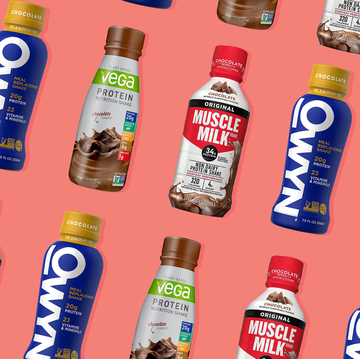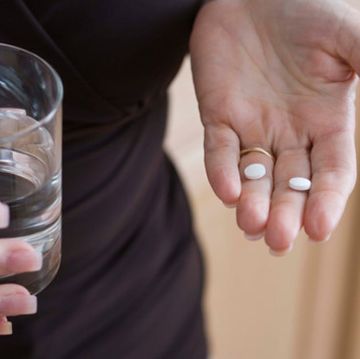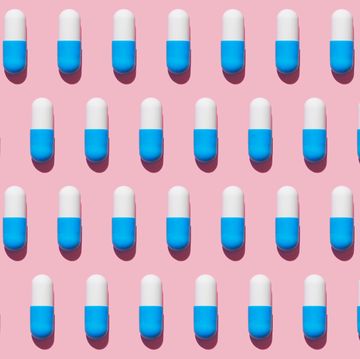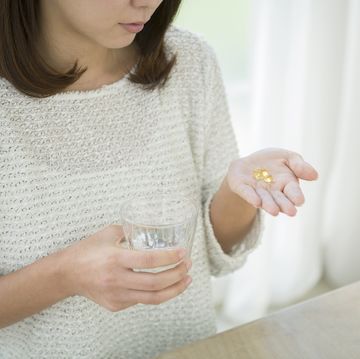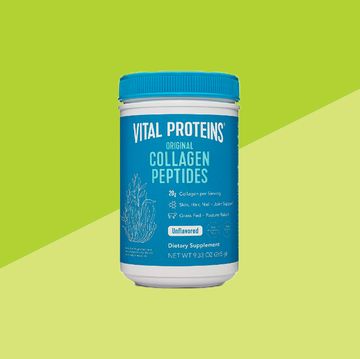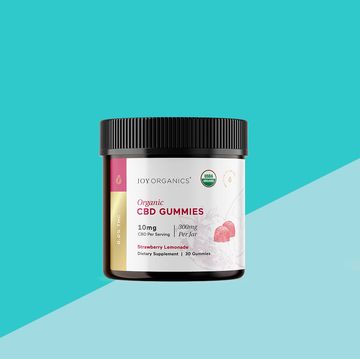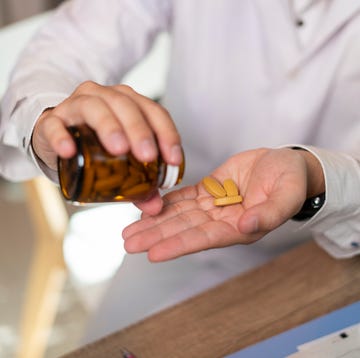From 1985 to 1995 a group of doctors set out to test a theory—that high doses of beta-carotene and retinol, two A vitamins with cancer-fighting properties, could greatly reduce our risk of getting cancer. They put study participants on 30 milligrams of beta-carotene and 25,000 International Units (IU) of retinol each day. But instead of turning their bodies into cancer-fighting machines, the vitamins actually caused some participants to get cancer. The doctors stopped the trial nearly two years early because of the results.
"We should step back and ask ourselves whether there might be a lesson to take from this sad experience of actually causing cancer with high vitamin intake," says Tim Byers, MD, professor of epidemiology at the Colorado School of Public Health. Byers, one of the original researchers in the trial, recently led a forum at the American Association for Cancer Research reviewing this and other studies that all found increased cancer risk with vitamin overdose. "I think the lesson is one that says a little nutrient is good, a lot may not be better," he says.
It's an easy lesson, but one many do not obey. At the first sign of a cold, we guzzle orange juice and vitamin C powders, take vitamin C tablets or suck on vitamin C infused cough drops—despite research that overloading your body with Vitamin C does nothing to get rid of your cold.
It usually doesn't cause any harm either, though, which may be why people continue to take it. Vitamin C is a water-soluble vitamin, meaning any extra hangs around in the water in your body until it's flushed out in your urine. So taking too much once in a while isn't really a problem.
MORE: Do You Just End Up Peeing Out All The Vitamins You Take?
But not all vitamins are water-soluble, and the ones that are lipid-soluble, meaning they like to hang around in your body's fat, don't get flushed out. Instead, if you take too much of a lipid-soluble vitamin over a few weeks to a month, they sit in the liver and can build up to toxic levels, causing problems ranging from weak bones to liver damage, according to Katherine Zeratsky, a registered dietician nutritionist at the Mayo Clinic.
Scientists are still trying to figure out exactly how much of a vitamin is too much for our bodies to handle, but in the meantime the Institute of Medicine has a list of Upper Tolerable Intake Levels, which is the best bet given the research so far.
Multivitamins:
How much is too much: More than one a day.
If you're a health-conscious person in the United States today, chances are you take a multivitamin. And one a day, even if you're already getting enough nutrients in food, won't hurt you. But more than one a day over a long period of time will. The most serious risk, according to the National Institute of Health, comes from multivitamins that include iron or calcium. Calcium toxicity can cause abdominal pain, weak bones, constipation, irregular heartbeat, and depression among other symptoms. Iron is one of the most dangerous minerals to overdose on, and can cause problems ranging from diarrhea and liver damage to low blood pressure and coma.
Vitamin C:
How much is too much: 2000 mg.
Since vitamin C is water-soluble, excess that your body doesn't need just gets flushed out in your urine. But, The Mayo Clinic warns, large doses of vitamin C can cause problems like diarrhea, nausea, vomiting, heartburn, cramps, headache, insomnia, and kidney stones. The average person needs only 65 to 90 mg of vitamin C every day, which you can find in one large orange or a cup of chopped bell peppers.
MORE: 4 Vitamins You're Probably Not Getting Enough Of
Vitamin A:
How much is too much: 3000 IU
Vitamin A is fat-soluble, which means it gets processed through your liver. Too much vitamin A will stick around until it can get processed—and taking too much every day for a month can lead to toxic levels. Other than studies like the one above showing both the beta-carotene and retinol forms of vitamin A can cause cancer, too much retinol has been linked with birth defects, weak bones, and liver damage.
Vitamin E:
How much is too much: 1100 IU
This is another one that has been linked to cancer. Vitamin E is fat-soluble and easy to get in your diet from foods like meat, eggs, and vegetables—so it's rare for people to have vitamin E deficiency. The average person only needs 15 mg a day, but can tolerate much more. Too much vitamin E can cause problems with blood clotting, and poses risk of hemorrhage. High doses have also been associated with both lung and prostate cancers.
Vitamin D:
How much is too much: 4000 IU, according to the IOM, but recent evidence suggests we may actually need more than 8000 IUto avoid Vitamin D deficiency.
Unlike vitamin E, vitamin D deficiency is common. Doctors estimate three out of every four people are vitamin D deficient; so taking a vitamin D supplement might not be a bad thing. But be careful not to overdo it. Taking 50,000 IU of vitamin D a day can lead to toxicity, according to the Mayo Clinic. Vitamin D toxicity builds calcium in your blood and lead to weak bones, kidney stones, nausea, kidney problems, and calcification of soft tissue.
MORE: Is A Vitamin Deficiency Making You Gain Weight?
Vitamin B:
How much is too much: 1 to 1.3 mg
There are many different forms of vitamin B, but the Institute of Medicine only lists limits for folic acid (vitamin B9) and vitamin B6. Although B vitamins are water-soluble like vitamin C, they can cause problems when taken in large doses. Folic acid, for example, has also been linked to cancer in high doses. It's also been known to cause stomach problems, trouble sleeping, rash, and seizure. And doctors believe taking more than 200 or 300 mg of vitamin B6 can cause nerve damage.



